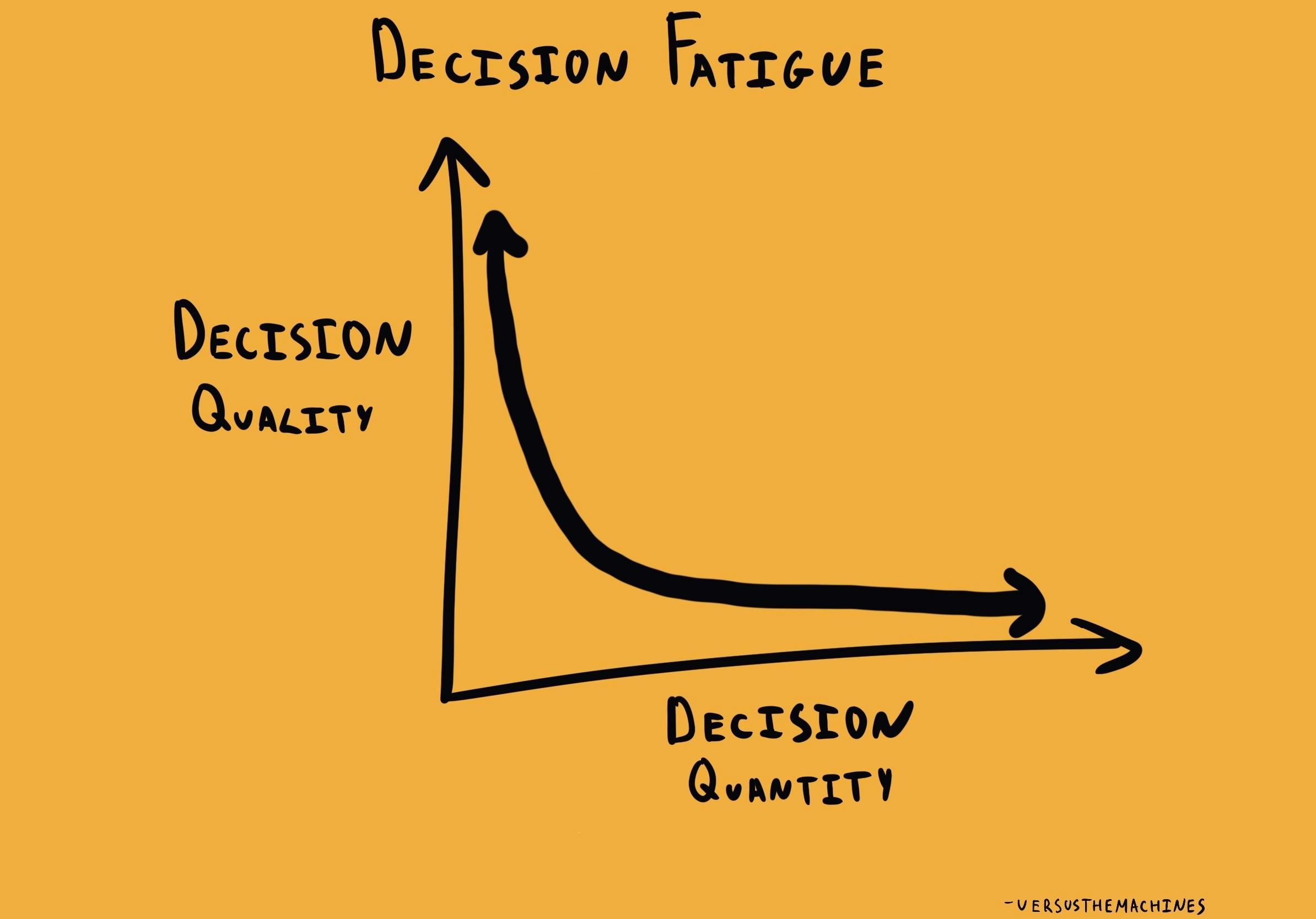Why do we make worse decisions at the end of the day?
Decision Fatigue
, explained.What is Decision Fatigue?
Decision fatigue describes how the quality of our decision-making declines as we make additional choices, as our cognitive abilities get worn out. Decision fatigue can occur when we either have too many choices to make or too many options to choose from, a phenomenon known as choice overload. This, in turn, can make us feel overwhelmed and experience a decline in our ability to actually make a choice.1

Where this bias occurs
Have you ever gotten to the end of a busy day, looked in the fridge, and had absolutely no idea what to make for dinner, despite having an abundance of food available? Or sat in front of your TV scrolling through the endless movie options on your streaming service but failing to find anything you’re interested in? Or perhaps looked in your wardrobe, which is overflowing with clothes, but had ‘nothing to wear’? On all of these occasions, you were likely experiencing decision fatigue, the mental exhaustion we can get after making decisions over and over again.
Decision fatigue is a cognitive shortcut that causes irrational trade-offs in decision-making.2 It emerges when mental resources are depleted after making numerous decisions, leading individuals to favor immediate gratification, oversimplify complex decisions, or default to familiar, less optimal options.
The phenomenon of decision fatigue can affect even the most rational and intelligent individuals, as everyone can become mentally exhausted. One prominent example is Barack Obama and his presidential outfits. As president of the United States, Obama had countless decisions to make every day. Some were incredibly important, like how to deal with overseas threats, while others were more mundane, like what to wear. To limit the number of decisions he had to make, and ensure that he was in top form for the most important ones, he claims to have worn the same colored suits every day.3 Obama understood decision fatigue and how it can compromise the quality of important choices.
The more decisions made throughout the day, the harder each decision becomes for us. Eventually, the brain looks for shortcuts to circumvent decision fatigue, leading to poor choices.














